Complete Solutions to Question of chapter MOTION IN A STRAIGHT LINE of Class 11 book with complete answers and questions
| Class 11 | PHYSICS |
| Chapter | MOTION IN A STRAIGHT LINE |
| GRB PUBLICATION | Question |
| Number Of Questions | 34 |
| Academic Year | 2023-24 |
A particle is moving in a plane with velocity `vec(v) = u_(0)hat(i) + k omega cos omega t hat(j)`. If the particle is at origin at `t = 0`, (a) determine the trajectory of the particle. (b) Find its distance from the origin at `t = 3pi//2 omega`.
07:30View Solution(a) A particle is moving eastward with a velocity of 5 m/s. If in 10 s the velocity changes by `5 m//s` northwards. What is the average acceleration in this time ?
(b) What is the retardation of a moving particle if the relation between time and position is, `t = Ax^(2) + Bx`? (where A and B are appropriate constants)06:12View SolutionA particle moves along a straight line and its velocity depends on time as `v=6t-3t^(2)` where 'v' is in m/sec and 't' is in sec. Find average velocity and average speed for first four seconds.
08:38View SolutionA particle starts moving on a circular track of radius `(20)/(pi) m` from point A with a uniform speed of `20 m//s`. It reaches to point B after some time. Find :
(a) Distance travelled by particle from A to B and its displaement for the same duration.
(b) Find the average speed, average velocity and average acceleration from A to B
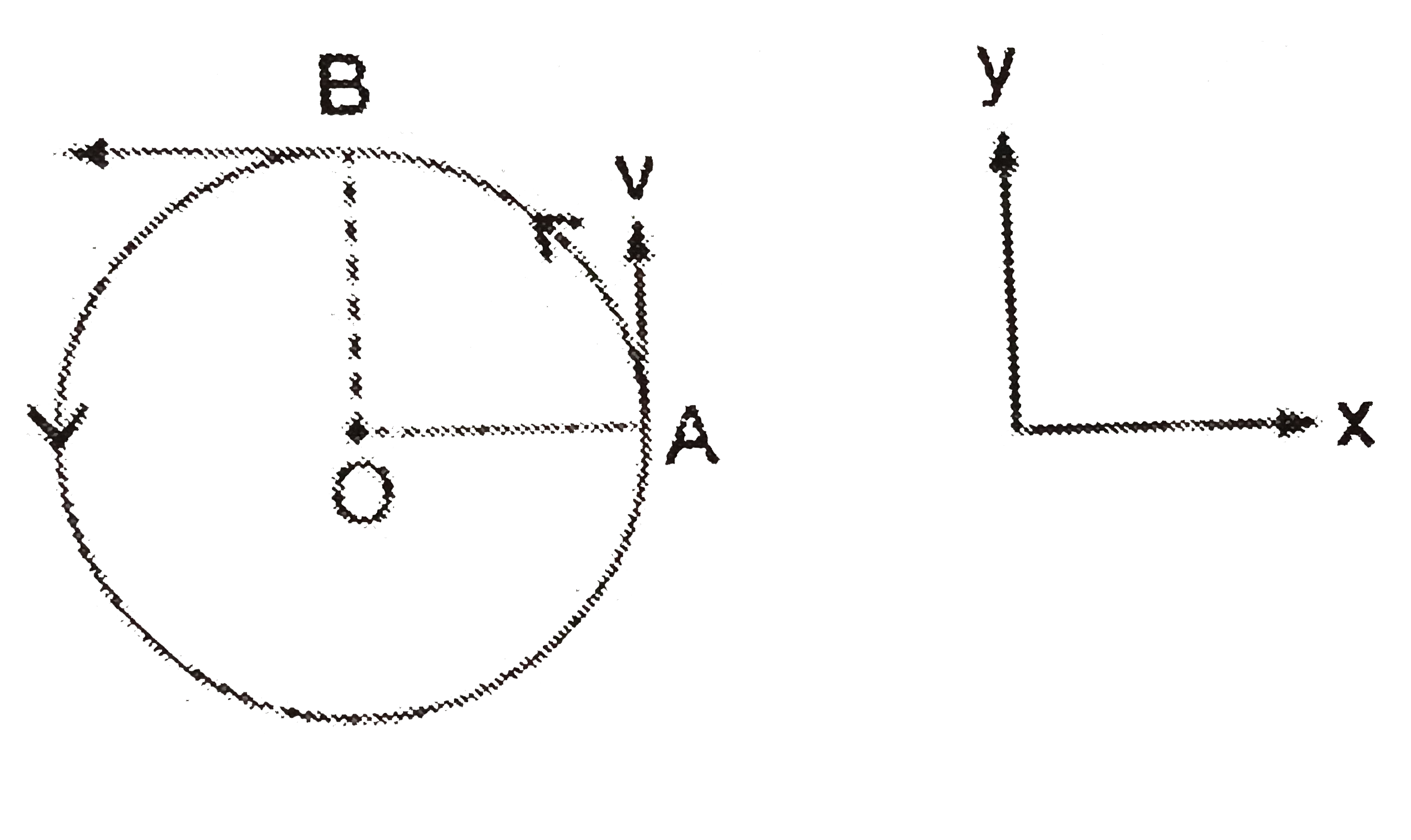 06:00View Solution
06:00View SolutionFind the average velocity of a particle moving along a straight line such that its velocity changes with time as `v (m//s) = 4 sin. (pi)/(2) t`, over the time interval `t = 0` to `t = (2n - 1) 2` seconds. (n being any `+` ve integer).
03:56View Solution(a) If the initial velocity of a particle is u and collinear acceleration at any time `t` is at, calculate the velocity of the particle after time `t`.
(b) A particle moves along a straight line such that its displacement at any time t is given by `s = (t^(3) - 6 t^(2) + 3t + 4)m`. What is the velocity of the particle when its acceleration is zero?04:27View SolutionA particle starts moving from the position of rest under a constant acc. If it travels a distance x in t sec, what distance will it travel in next t sec ?
03:05View SolutionAn aeroplane requires for take off a speed of `80 km//h` the run on the ground being 100 m The mass of aeroplane is `10^(4)` kg and coefficient of friction between aeroplane and ground is 0.2 What is the maximum force required by the engine of the plane for take off ?
03:16View SolutionA particle moving with a velocity equal to `0.4 m//s` is subjected to an acceleration of `0.15 m//s^(2)` for `2 s`. in a direction at the right angle to its direction of motion. The resultant velocity is
02:30View SolutionAt the insutant the traffic light turns green a car starts with a constant acc. `2 m//s^(2)`. At the same instant a truck, travelling with a constant speed of `10 m//s`, overtakes and passes the car. (a) How far beyond the starting point will the car overtake the truck ? (b) How fast will the car be travelling at that instant? (c) Draw `s//t` curves for each vehicle.
05:49View SolutionA car accelerates from rest at a constant rate `alpha` for some time, after which it decelerates at a constant rate `beta,` to come to rest. If the total time elapsed is t seconds. Then evalute (a) the maximum velocity reached and (b) the total distance travelled.
05:34View SolutionA particle starts from rest and moves with an acceleration of `a={2+|t-2|}m//s^(2)` The velocity of the particle at `t=4` sec is
03:26View SolutionA particle of mass m moves on the x-axis as follows. It starts from rest at t = 0 from the point x = 0 and comes to rest at t = 1 at the point x = 1 No other information is available about its motion at intermediate time `(0 lt t lt 1)`. If `alpha` denotes the instantaneous acceleration of the particle, then
01:14View SolutionThe acceleration versus time graph of a particle moving along a straight line is shown in the figure. Draw the respective velocity-time graph Given `v=0` at `t=0.`
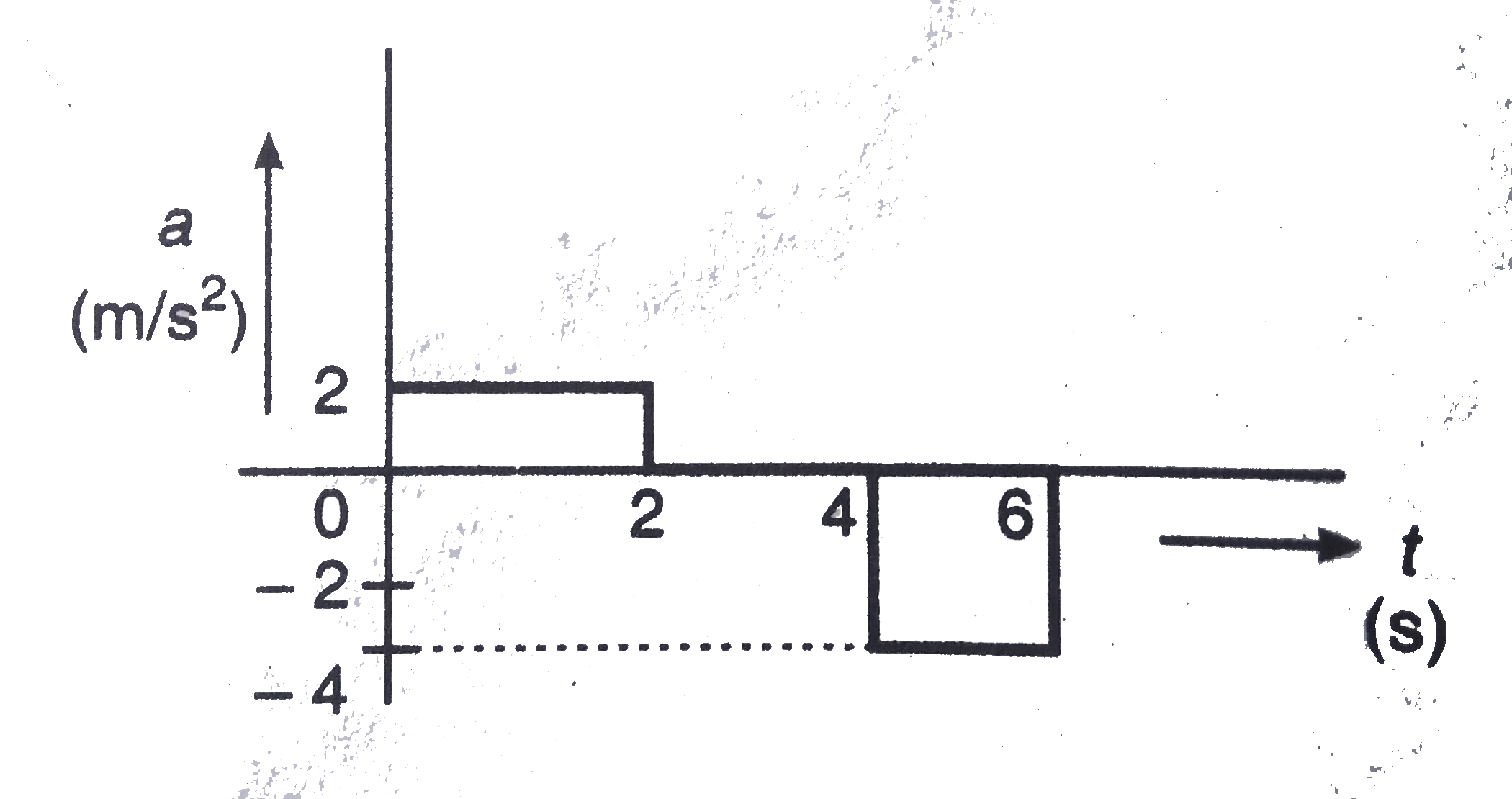 07:37View Solution
07:37View SolutionA ball is projected vertically up with an initial speed of `20m//s` on a planet where acceleration due to gravity is `10m//s^(2)`
(a) How long does it takes to reach the highest point?
(b) How high does it rise above the point of projection?
(c) How long wil it take for the ball to reach a point `10m` above the point of projection?02:36View SolutionA juggler throws ball into air. He throus one whenever the previus one is at its highest point. How high do the balls rise if he throus (n) balls each second. Acceleration the to gravity=g`.
03:09View SolutionA pebble is thrown vertically upwards from a bridge with an initial velocity of 4.9 m/s. It strikes the water after 2s. If acc. Due to gravity of `9.8 m//s^(2)` (a) what is the height of the bridge ? (b) with what velocity does the pebble strike the water ?
03:18View SolutionUsually average speed means the rationof total distace travelled to the total time elapsed. However, sometimes thephrase ` average speed can be the magnitude of the average velocity. Are the two same ? Discuss.
02:06View Solution(a) Is it possible to be accelerating if you are travelling at constant speed?
(b) Is it possible to move on a curved path with zero acceleration, constant acceleration, variable acceleration03:09View SolutionWhat does `d|vec(v)|//dt` and `|d vec(v)//dt|` represent ? Can these be equal ? Can. (a) `d|vec(v)|//dt = 0` while `|d vec(v)//dt| != 0` (b) `d|vec(v)|//dt != 0` while `|d vec(v)//dt| = 0`?
06:00View SolutionA truck and a car are brought to a hault by application of same braking force. Which one will come to stop in a shorter distance if they are moving with same (a) velocity (b) kinetic energy and (c) momentum ?
05:39View SolutionA cockroach moves rectilinearly such that after sometime `t_(0)` let its (instantaneous) velocity be equal to its average velocity over that time. Referring to the `S Delta t` graph as shown in , for the motion of the cockroach, find the time `t_(0)` and the average velocity of the cockroach over the time `t_(0)`
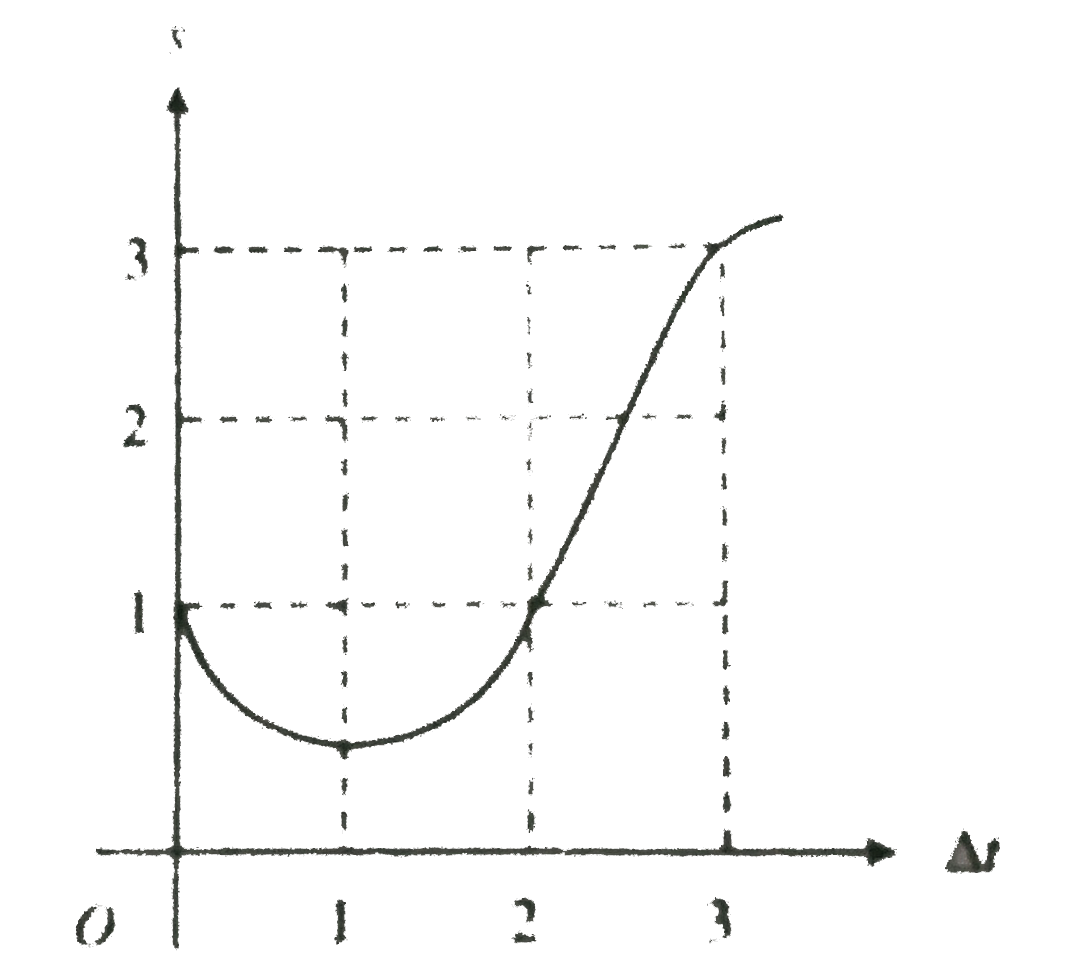 . 02:49View Solution
. 02:49View Solution(The `v - t` graph) A particle moving in x-axis is given. Find the distance and displacement of the particle during two seconds from starting.
 02:46View Solution
02:46View SolutionA diwali rocket moves vertically up with a constant acceleration `a_(1) =20`//` 3 m s^(-2)`. After sometimes, its fuel gets exhausted and then it falls freely with an acceleration `a_(2) =10 m s^(-2)`, If the maximum height attained by the diwali rocket is (h), using graphical method, find its speed when the fuel is just exhausted. Assume `h=50 m`.
06:20View SolutionA particle moves vertically with an upward initial speed `v_(0) = 5 m//s`. If its acceleration varies with time as shwon in `a - t` graph in the fig. 4.30, find the velocity of the particle at `t = 7s`.
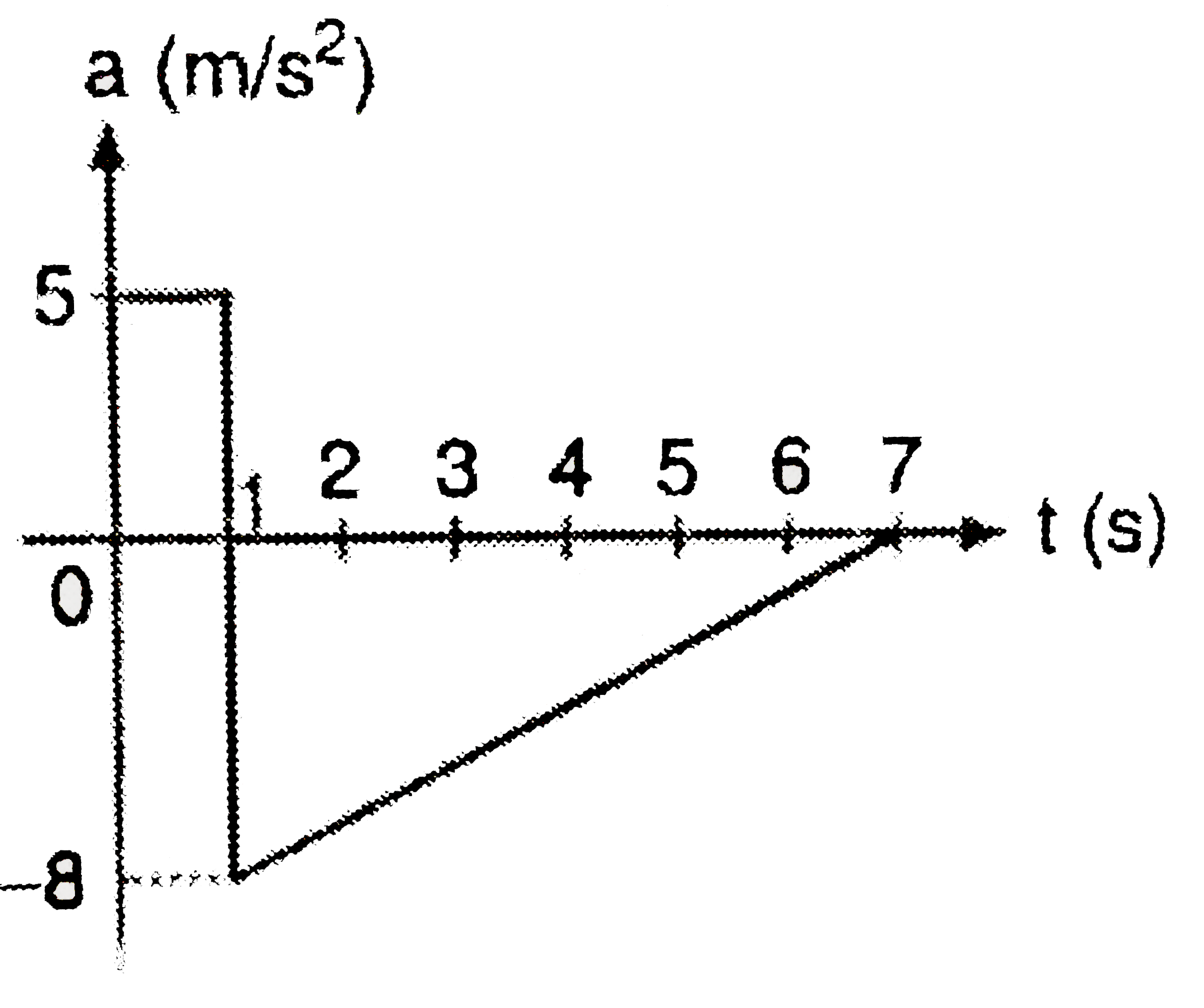 03:14View Solution
03:14View SolutionThe `v-s` and `v^(2)-s` graph are given for two particles. Find the accelerations of the particles at `s=0`.
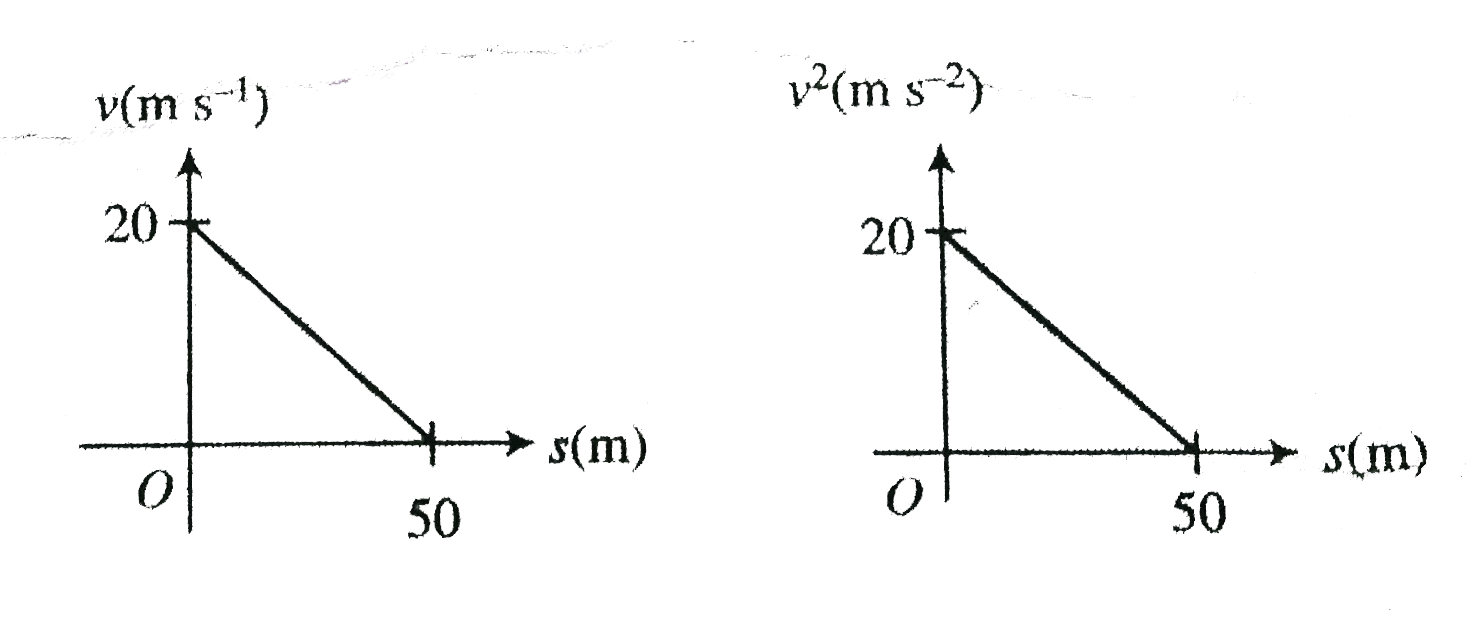 .03:51View Solution
.03:51View SolutionA racing motor boat speeds up in a straight line in a lake, from rest. Referring to the acceleration-displacement graph for the speeding boat find its speed when it passes a raft at a distance of `40m` from the starting point.
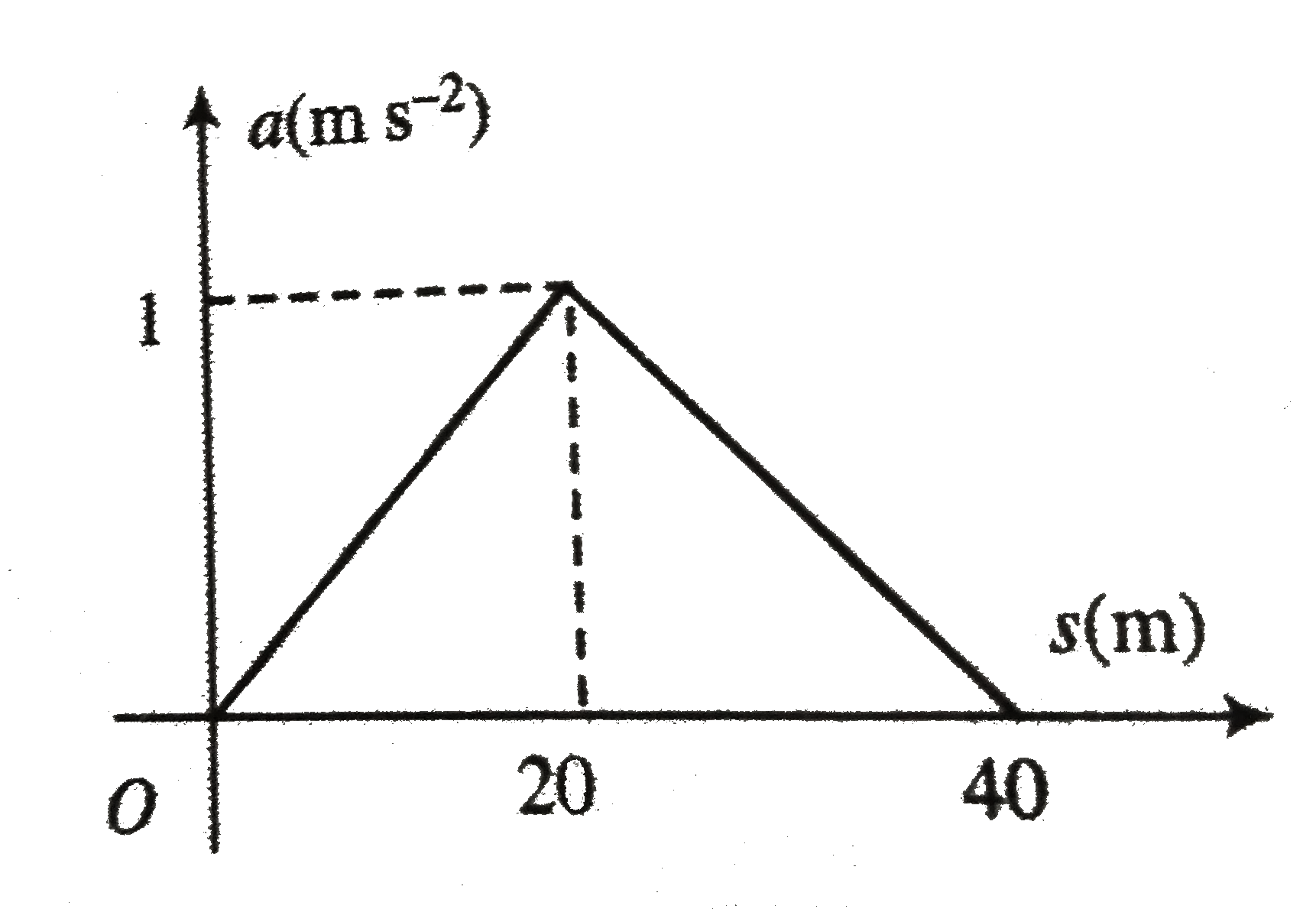 . 02:32View Solution
. 02:32View SolutionWhen the velocity is constant, can average velocity over any time interval differ from instantaneous velocity at any instant ? If so, give an example, if not, explain why?
03:23View SolutionExplain with reasons which of the following gaphs can possibly represent the motion of a particle observed in nature ?
 03:58View Solution
03:58View SolutionTwo balls of different masses are thrown vertically upwards with the same speed . They pass through the point of projection in their downward motion with the same speed ( Neglect air resistance ).
03:00View SolutionA man standing on the edge of a cliff throws a stone straight up with initial speed (u) and then throws another stone straight down with same initial speed and from the same position. Find the ratio of the speeds. The stones would have attained when they hit ground at the base of the cliff.
03:11View SolutionFrom top of a huilding a ball is dropped while another is frpjected horizontally at the same tme . (a) Which ball will strike the ground first ? (b) Which ball will strike the ground with more speed.
04:11View SolutionA steam boat goes across a lake and comes back : (a) on a quiet day when the water is still and (b) on a rough day when there is a uniform current so as to help the journey onward and to impede the journey backward. If the speed of launch on both days same, in which case will it complete the journey in lesser time?
04:19View SolutionFour persons K,L,M,N are initially at the four corners of a square of side d. Each person now moves with a uniform speed v in such a way that K always moves directly towards L, L directly towards M, M directly towards N, and N directly towards K. The four persons will meet at a time............. .
03:30View Solution
Question questions and complete solutions for chapter MOTION IN A STRAIGHT LINE of GR BATHLA & SONS PHYSICS (HINGLISH) of Class 11
